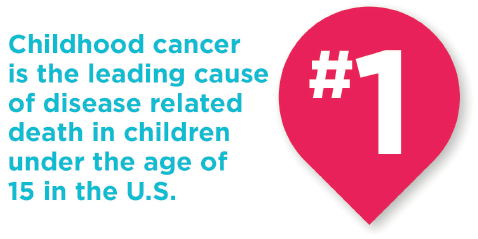Facts About Kids' Cancer
The facts about childhood cancer are alarming. But they drive what we do.
Faced with these realities, we believe we can make a difference.
FACTS
• Cancer is the leading cause of disease-related deaths in children
under 20.
• Every year, about 12,400 children and teens under the age of 20 are diagnosed with cancer – that is one in every 330 children.
• The average age of diagnosis is 5.
• Although cure rates are steadily increasing, 35% of children will die from a diagnosis of cancer.
• One fourth of all pediatric cancers diagnoses are brain tumors.
• Diagnoses of brain cancers and other central nervous system tumors rose by more than 25% between 1973 and 1996. In general, children diagnosed with central nervous system tumors do NOT share the favorable prognosis of those with many other more common pediatric abnormal masses.
• Over the past 20 years, there has been some increase in the incidence of children diagnosed with all forms of invasive cancer; from 11.4 cases per 100,000 children in 1975 to 15.2 per 100,000 children in 1998.
• Diagnoses of leukemia, which is the most common childhood cancer, increased by more than 15% over the past 20 years.
• Cancer remains the number one disease killer of children; more than genetic anomalies, cystic fibrosis, and AIDS combined.
For more graphics and shareable childhood cancer statistics, click here.
And yet every advancement in curing childhood cancer has come through research and that research is working.
Survival rates for childhood cancer have risen sharply over the past 20 years. In the United States, more than 75 percent of children with cancer are now alive five years after diagnosis, compared with about 60 percent in the mid-1970s. Much of this dramatic improvement is due to the development of improved therapies at children’s cancer centers, where the majority of children with cancer have their treatment.
Pediatric cancer research has also opened the doors for progress in adult cancer research.
It has
• Increased the overall understanding the basic biology of cancer,
• Provided principles of therapy and advances for other diseases of children and adults.
In addition,
Chemotherapy was first shown to be effective in curing children with cancer
The discovery of the first tumor suppressor gene occurred in children with cancer and
The principle of multi-modal therapy was pioneered in childhood cancer
research studies.


